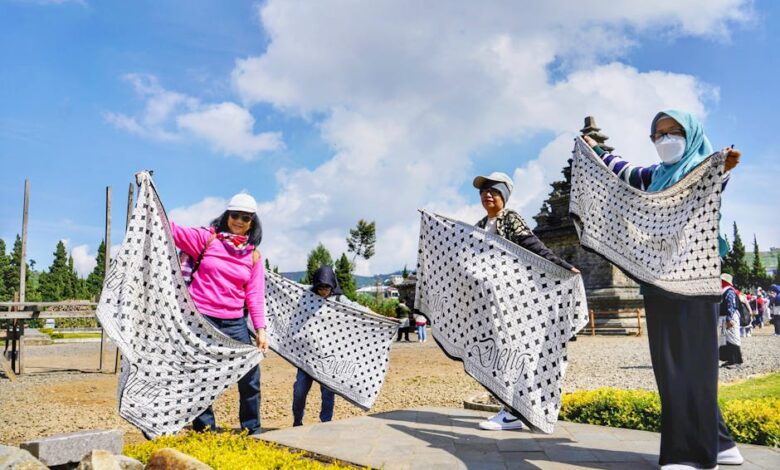OpenAI Launches Sora 2 and a Consent-Gated Sora iOS App

OpenAI Launches Sora 2 and a Consent-Gated Sora iOS App
Estimated Reading Time: 5 minutes
- OpenAI has released Sora 2, an advanced text-to-video-and-audio model focusing on physical plausibility, multi-shot controllability, and synchronized media.
- A new invite-only Sora iOS app (U.S. and Canada) allows for social creation, remixing, and consent-controlled “cameos” where users can insert a verified likeness of themselves.
- The platform features robust safety measures including C2PA metadata, visible watermarks, restrictions on public figures, and parental controls.
- Sora 2 prioritizes ethical AI generation, requiring explicit consent for cameo usage and providing users full control over their likeness in generated content.
- Access to the Sora iOS app is currently invite-only, with an experimental Sora 2 Pro tier available for ChatGPT Pro users and future API access planned.
- Redefining Reality: Sora 2’s Advanced Capabilities
- Empowering Creation with Consent: The Sora iOS App and “Cameos”
- A Foundation of Responsibility: Safety, Provenance, and Parental Controls
- Access, Pricing, and Actionable Steps
- Conclusion
- Frequently Asked Questions (FAQs)
The landscape of AI-powered content creation is undergoing a rapid transformation, with capabilities once confined to science fiction now becoming reality. In a pivotal moment for generative artificial intelligence, OpenAI has unveiled its latest innovation: Sora 2. This advanced text-to-video-and-audio model promises to reshape how we conceptualize and produce digital media, pushing the boundaries of realism and user control.
OpenAI released Sora 2, a text-to-video-and-audio model focused on physical plausibility, multi-shot controllability, and synchronized dialogue/SFX. The OpenAI team has also launched a new invite-only Sora iOS app (U.S. and Canada first) that enables social creation, remixing, and consent-controlled “cameos” for inserting a verified likeness into generated scenes.
This dual launch—a powerful new model alongside a user-centric mobile application—signals a deliberate strategy from OpenAI. They’re not just showcasing raw technological prowess but are also laying the groundwork for a responsible, accessible, and ethically governed ecosystem for AI-generated video. The focus is clearly on enabling creation while meticulously integrating safeguards from the ground up.
Redefining Reality: Sora 2’s Advanced Capabilities
Sora 2 represents a significant leap forward in AI video generation, moving beyond mere visual aesthetics to encompass a deeper understanding of the physical world. Its core claims revolve around material improvements in world modeling, offering a much more believable and consistent output than its predecessors.
For instance, where earlier models might struggle with object persistence or physical interactions, Sora 2 claims materially better world modeling. This translates to scenarios like a ball realistically rebounding on missed shots rather than magically “teleporting” or disappearing. This enhanced grasp of physics is crucial for generating truly immersive and convincing video content.
Beyond physics, Sora 2 excels in multi-shot controllability. The model can maintain state across multiple shots, allowing for more complex instruction-following edits and the creation of coherent narratives that span longer sequences. This capability positions it as a tool for crafting entire scenes, not just isolated clips, providing unprecedented control to creators.
Another groundbreaking feature is its ability to generate native, time-aligned audio. This includes speech, ambient sounds, and special effects that are perfectly synchronized with the visuals. This integrated audio capability eliminates the need for separate sound design processes for basic generations, greatly streamlining the creative workflow and enhancing the overall quality of the output.
OpenAI frames these advancements—physical plausibility, multi-shot control, and synchronized audio—not as mere enhancements, but as prerequisites for “simulation-grade video generation.” This suggests a long-term vision where AI doesn’t just synthesize “best effort” single clips but can generate entire simulated environments and events with high fidelity. Imagine generating a short film where a character throws a ball, and it realistically bounces off a wall, with perfectly synchronized sound effects, and then they pick it up in the next shot, all maintaining perfect visual and physical consistency.
Empowering Creation with Consent: The Sora iOS App and “Cameos”
To democratize access to these cutting-edge capabilities, OpenAI has launched the invite-only Sora iOS app, initially available in the U.S. and Canada. This app is designed to foster “social creation” and “remixing,” providing a platform where users can experiment, collaborate, and share their AI-generated videos directly from their mobile devices.
At the heart of the app’s architecture are “cameos.” This innovative feature allows users to insert a verified likeness of a real person into generated scenes. The process is straightforward and, crucially, consent-driven: users record a short in-app video and audio snippet to verify their identity and capture their likeness. This verification step is fundamental to the ethical framework surrounding cameos.
Once a cameo is created, the owner of that cameo retains complete control. They can specify who is permitted to use their likeness in generated content, and they possess the power to revoke or delete any video—including drafts—that incorporates their cameo. This granular level of control is a direct response to growing concerns about deepfakes and unauthorized digital impersonation, establishing a new standard for responsible AI media generation. The app’s availability on iOS devices marks a significant step towards mobile-first AI video creation, with plans for broader expansion beyond its initial U.S./Canada rollout.
A Foundation of Responsibility: Safety, Provenance, and Parental Controls
OpenAI’s approach with Sora 2 and the accompanying app is characterized by an “iterative rollout” and a robust “safety posture.” This means that capabilities are introduced thoughtfully, with specific restrictions and controls in place from day one. Transparency and user protection are paramount.
At launch, OpenAI has implemented several key restrictions. The use of image uploads featuring photorealistic persons and all video uploads is restricted. Sora 2 does not support video-to-video generation at launch. Furthermore, the model actively blocks text-to-video generation of public figures and prohibits the inclusion of real people in generations, unless that person has explicitly opted-in via the cameo feature. Additional classifier thresholds are applied when a real person is detected, adding further layers of protection.
To combat misinformation and ensure transparency, “provenance controls” are deeply integrated. All outputs from Sora 2 carry C2PA metadata, a standard designed to provide tamper-evident information about the origin and history of digital content. Downloads also feature a visible moving watermark, making the AI origin clear. Internal detection tools further assist in assessing the origin of any generated content.
In parallel, OpenAI has introduced parental controls integrated via ChatGPT, demonstrating a holistic approach to user safety across its platforms. Parents can opt teens into a non-personalized feed, manage direct message (DM) permissions, and control whether continuous scroll is allowed. These measures are thoughtfully aligned with the Sora feed’s “creation-over-consumption” philosophy, aiming to foster active participation rather than passive engagement among younger users.
Access, Pricing, and Actionable Steps
The Sora iOS app is available for download now, though access is currently granted by invite only. Sora 2 itself is initially free, operating under compute-constrained caps to manage demand and ensure a stable user experience.
For those seeking advanced capabilities, ChatGPT Pro users will gain access to an experimental Sora 2 Pro tier on sora.com, with integration into the app planned for the future. Looking ahead, API access is slated for release after the consumer rollout, opening doors for developers and businesses to integrate Sora 2 into their own applications and workflows. Users of the previous Sora 1 Turbo will find their existing content still accessible in their libraries.
Here are 3 actionable steps to engage with Sora 2:
- Sign Up for the Waitlist: Keep an eye on OpenAI’s official announcements for information on how to request an invite to the Sora iOS app. Early access could provide valuable experience with this groundbreaking tool.
- Explore ChatGPT Pro: If you’re a serious creator or simply curious about advanced features, consider a ChatGPT Pro subscription. This could grant you earlier access to the experimental Sora 2 Pro tier and its enhanced capabilities.
- Understand Consent Features: If you plan to use the “cameo” feature, thoroughly familiarize yourself with its consent controls. Prioritizing ethical use and respecting individual likeness rights is crucial for responsible AI creation.
Conclusion
Sora 2 pushes text-to-video generation toward a new paradigm of controllable, physics-respecting, and audio-synchronized output. OpenAI is not merely releasing a powerful model; it is shipping it within an invite-only iOS app, fortified with consent-gated cameos, C2PA metadata, and visible watermarks for undeniable provenance. This initial U.S./Canada rollout prioritizes stringent safety constraints, including restrictions on public-figure depictions, while meticulously staging broader access and future API plans.
This deliberate, iterative approach signals a significant shift. OpenAI is moving beyond raw capability demonstrations towards building governed, production-ready media tooling. Sora 2 is not just an advancement in AI; it’s a testament to a future where innovation and responsibility evolve hand-in-hand, shaping the digital creative landscape for the better.
The post OpenAI Launches Sora 2 and a Consent-Gated Sora iOS App appeared first on MarkTechPost.
Discover More About Sora 2 on OpenAI’s Website
Frequently Asked Questions (FAQs)
What is Sora 2?
Sora 2 is OpenAI’s latest text-to-video-and-audio model, designed to generate highly realistic and consistent video content. It features advanced capabilities like enhanced physical plausibility, multi-shot controllability, and natively integrated, time-aligned audio, moving towards “simulation-grade video generation.”
What are “cameos” in the Sora iOS app?
Cameos are a feature within the invite-only Sora iOS app that allows users to insert a verified likeness of a real person into generated scenes. Users provide a short video and audio snippet for verification, retaining full control over who can use their likeness and the ability to revoke any content featuring their cameo.
How does OpenAI ensure safety with Sora 2?
OpenAI employs a robust “safety posture” for Sora 2, including C2PA metadata on all outputs, visible watermarks, internal detection tools, and restrictions on image/video uploads featuring photorealistic persons. It also blocks generation of public figures and prohibits real people unless explicitly opted-in via cameos, supported by parental controls through ChatGPT.
How can I get access to Sora 2 or the iOS app?
The Sora iOS app is currently available by invite only in the U.S. and Canada. Sora 2 itself is initially free with compute caps. An experimental Sora 2 Pro tier will be accessible to ChatGPT Pro users on sora.com, with app integration and broader API access planned for the future. Keep an eye on OpenAI’s official announcements for invitation details.
Will Sora 2 be available via API?
Yes, API access for Sora 2 is slated for release after its consumer rollout. This will allow developers and businesses to integrate Sora 2’s advanced text-to-video generation capabilities into their own applications and workflows.





